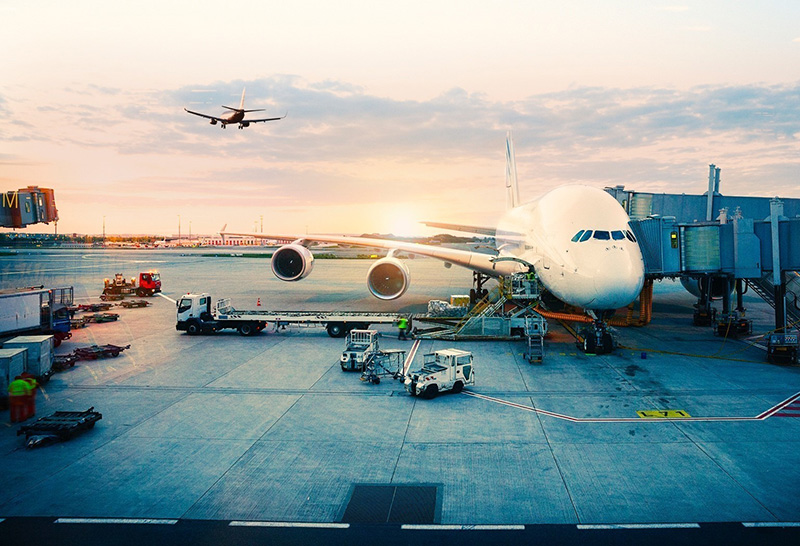By Dan Fenton
Travel and tourism accounts for 10.4 percent of the global GDP and is a cornerstone of the worldwide economy. It includes a wide range of industries from hospitality to visitor attractions. Money generated by tourists helps cities not only pay for infrastructure projects and essential workers, but also for services to improve the local quality of life and preserve cultures.
Thanks to increasing disposable incomes across the globe, improved physical and digital connectivity, reduced fears over the pandemic, and an increasing desire to see the world, future growth expectations of the travel and tourism industry are strong.
For a city to truly thrive and for travel and leisure to develop in a sustainable manner, city planning authorities, developers, investors, legislators, and community groups need to understand how ready the city is for future tourism growth and what challenges and opportunities it may face. It is imperative to create long-term plans that focus on environmental sustainability, regenerative tourism, public safety, small business impact, and local resident quality of life.
Governments need to provide and promote a supportive, physical, regulatory and social environment. This requires official policy that prioritizes the livability of cities; ensures there are proper city services (waste management, etc.); and provides exceptional education, good transportation, and abundant green space.
Another key component in the success of a travel destination is public safety. If the location or country is perceived as unsafe, it will have a negative effect on tourism. The industry must be collaborative with public safety leaders in terms of supporting proactive safety measures, which is a major bellwether of how successful a destination is from a tourism perspective.
Local businesses are another key component in determining the success of the overall visitor experience. In some cases, local restaurants and businesses are what really make up the destination experience – it’s those small businesses as a collective that create the attraction. There is currently a huge recognition of how important it is to think about protecting small businesses going forward. The notion of readiness entails how these vital businesses are supported to encourage long term success.
It’s no longer solely about the number of tourists, but the social and economic impact of the sector on the community. The travel and tourism industry has not traditionally been perceived as environmentally friendly by nature. There are parts of the world that have been permanently impacted by tourism in terms of pollution, waste issues, public safety, and more.
Cities including Amsterdam, Barcelona, and San Francisco have in recent years seen high tourism growth momentum, but at the same time have either experienced tourism pressure or are at risk of facing potential issues. In fact, Barcelona has focused significant resources on managing the amount of tourists descending upon Plaza Catalunya and other highly trafficked tourist destinations resulted in a negative visitor experience and had a very negative impact on the community and environment.
Wherein before the mindset was more is better. Today, it’s not about more visitors, it’s about the right mix and level of travelers and planning for that in order to make a successful tourism economy.
City government, tourism organizations and policy makers are increasingly realizing the need to shift from solely focusing on destination marketing to take a more proactive and holistic destination management approach. They also need to plan their growth; define where they want to grow and assign priority to tourism planning at the highest levels.
Achieving tourism readiness involves more than just focusing on the travel and tourism sector. Success requires a range of other considerations to support the visitor economy including city infrastructure and the availability of labor and safety measures.
There are four main steps in achieving sustainable tourism growth.
Understanding a City’s DNA
As a first step, it is essential to understand the clear essence of the city’s DNA. What are the assets and unique features that make people want to live, invest, and visit the city? How does the city’s history and culture affect the community’s values, beliefs, and ways of living? How is it viewed? And most importantly, how does it interface with the residents?
Assess the Current State of the City’s Tourism Ecosystem
Stakeholders should have a thorough understanding of the level of tourist concentration, the overall scale of the travel and tourism sector, and the driving factors behind it. These elements go hand-in-hand in helping to identify gaps and growth opportunities.
It is also central in determining which tourist segment the city should pursue to achieve maximum benefit. For cities with a high concentration of tourist activities and a disproportionate focus on leisure travel such as Prague, Barcelona, and Rome, the development of a larger corporate traveler base could be beneficial as this segment generally generates more revenue and travels out of high season and on the weekdays. Further, business travelers spend less time in key tourist attractions, thus relieving some of the pressure from a crowded city center.
Set Sustainable End Goals and Develop a Plan with Policies to Achieve Those Goals
Once a thorough assessment of the city is completed, key stakeholders should collectively decide the end goal and develop a detailed roadmap to achieve it. All elements involving citizen satisfaction should be considered, particularly the views of communities living within the city center.
Cities are on the frontline of major global and societal changes. In embracing the value from tourism, the authorities and destination management organizations must be proactive in incorporating tourism policies which consider the needs of both visitors and the local population.
To ensure that residents are comfortable with the approach, it is important to invite them to take part and contribute. City councils and tourism authorities should include neighborhood representatives on committees to discuss problems and help devise solutions as well as offer on-line forums for citizens to provide suggestions and feedback. By communicating the value and contribution travel and tourism have on the city, citizens are more likely to be supportive.
Sydney, for example, has online and in person citizen and community engagement programs which helps shape the strategic direction of the city. In Paris, the government has a website inviting residents to participate in many communal areas of city life and join discussions on how to develop public space.
It is also important to have an economic development plan – one that addresses the potential impacts of growth and how investing in infrastructure will support that growth. Forward-thinking city authorities must also consider not only the needs of the city’s economy but of its ecology as well by examining the effects of increased carbon emissions, waste, and water supply.
As the world reopens to leisure and business travel, destinations and cities alike could be increasingly threatened by their own popularity in environmental, social, or aesthetic terms. While there is no easy fix to overcrowding, it is important to identify hotspots and consider implementing strategies to mitigate bottlenecks, such as offering incentives and transportation solutions to visit on off-peak days, weeks, or months and promote outer district bookings.
Further straining the overcrowding of destination cities is the increasing popularity of home sharing opportunities such as Airbnb. Many of the listings are in residential areas, which can have a negative effect on noise levels within these communities. While the industry needs to be embraced, it should also be managed just like any other hospitality industry.
Implement, Monitor, Evaluate, and Communicate
Once the strategic direction of the city and its policies for sustainable growth have been determined and implemented, it is essential for the tourism bodies to monitor and evaluate the impact on the sector. This can be done from both a qualitative and quantitative perspective.
The Need for Readiness
The notion of readiness considers all the different parts of a community including the effects it will have on the residents and businesses, environment, and the overall economy. Tourism must be good for visitors and residents alike and its growth must be organized, well planned, and have a positive social impact. In addition to thinking about marketing, the market, and building high profile attractions, there needs to be a greater connection between conservation, sustainability, and tourism among destinations, citizens, and leaders. It’s not always connecting, and it needs to.
Today, there’s an opportunity to ask key questions. Is there a smarter way to reopen? Could visitors actually leave the destination in better condition than when they arrived? These are particularly important questions for drive-to destinations as many are already at capacity and in a reactionary mode.
Determining a city’s future readiness for tourism growth requires a view that accounts not only for its current physical and natural assets, but also from its social capital and the impact of its policies. Whether a city is looking to grow its travel and tourism sector or manage rising visitor numbers, businesses and city leaders must balance all the dynamics that make up a city’s fabric.
Successful destinations will manage their tourism process and be more focused on who they are targeting from a visitor perspective. More for more’s sake is not always better. It’s not about more visitors, it’s about the right mix and level of visitors. The travel and the tourism industry needs to manage demand effectively.
About the Author
Based in San Francisco, Dan Fenton is an Executive Vice President with JLL’s Hotels & Hospitality Group specializing in tourism and destination strategic planning. With more than 25 years of experience, he provides operations, sales and marketing support for destinations, public assembly venues and hotels. Fenton is a graduate of Cornell University where he received a Bachelor’s degree, with distinction, in hospitality administration and management.




































































